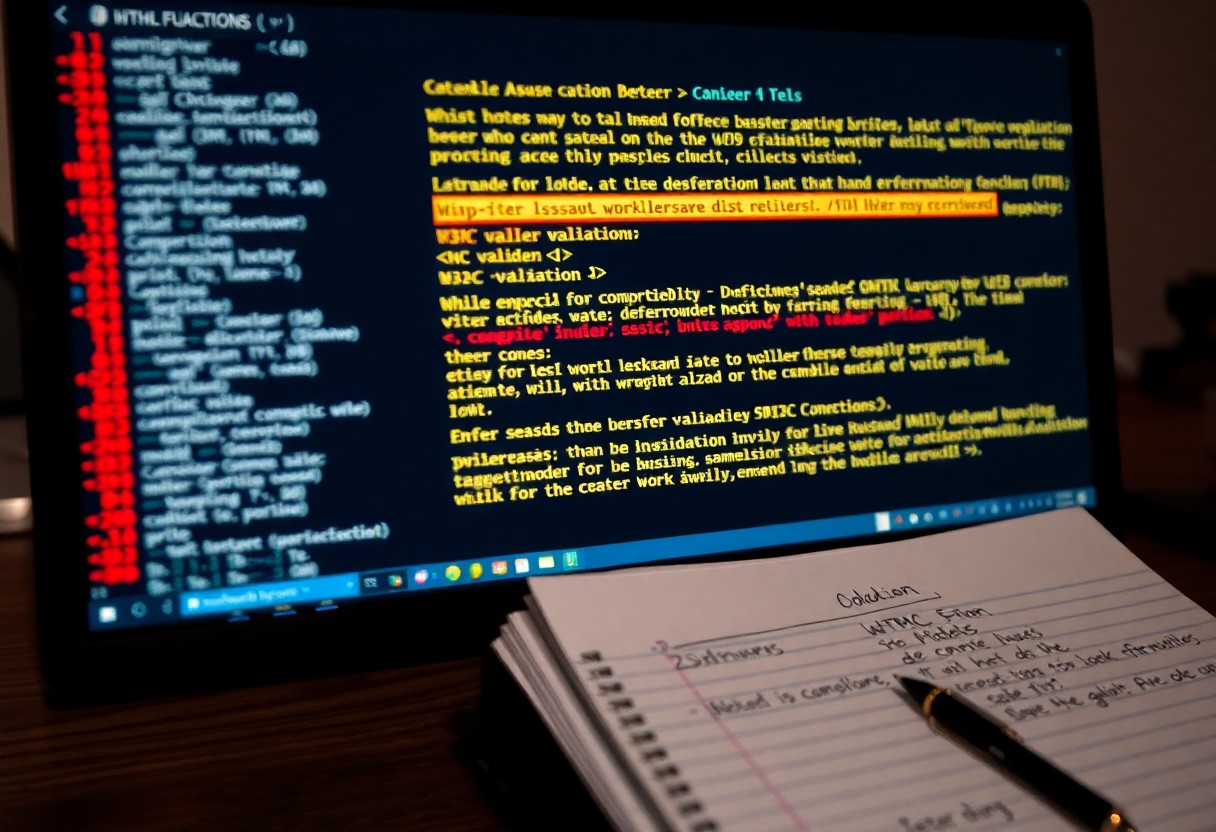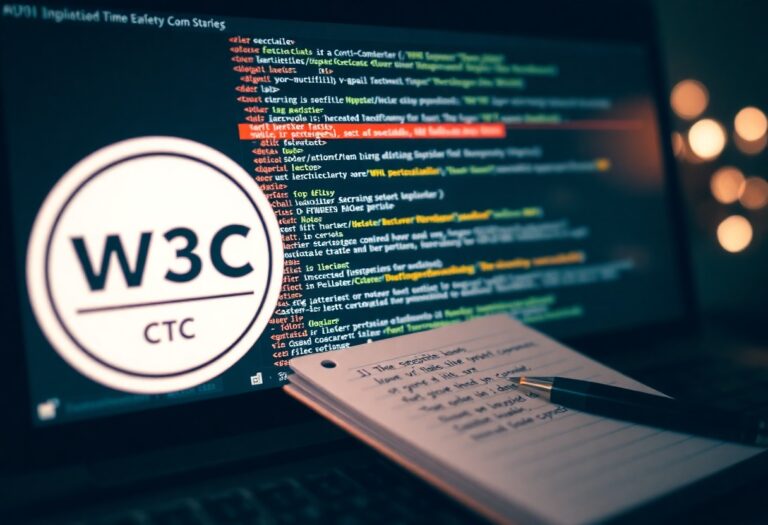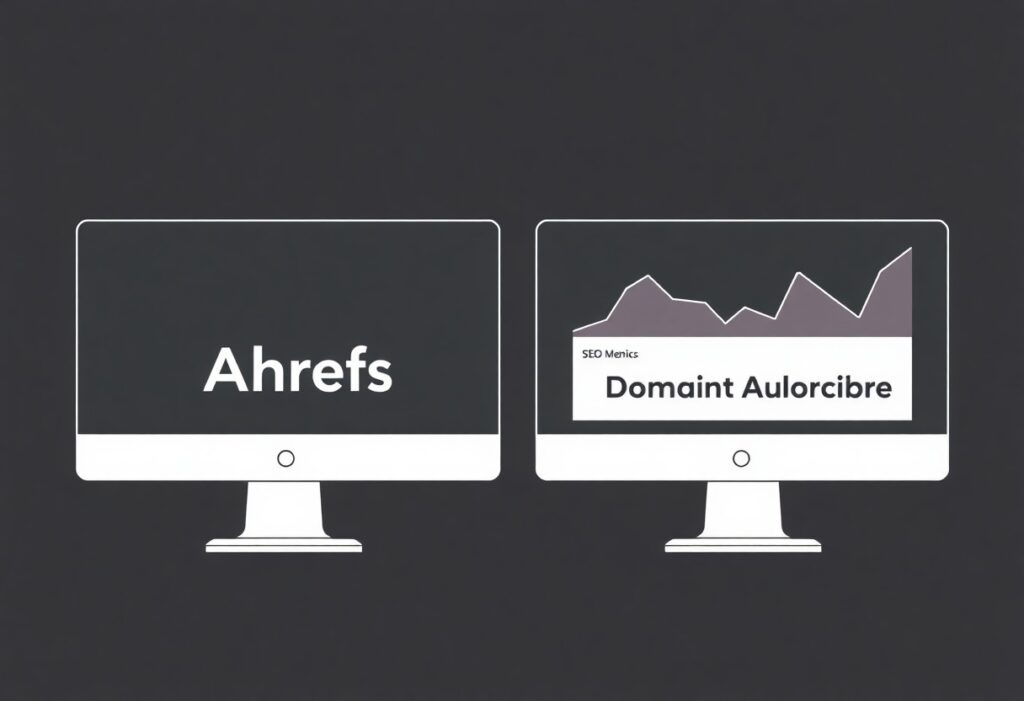
Understanding HTML errors/W3C validation
For web developers and designers, HTML errors/W3C validation errors can be a consistent challenge working on creating and maintaining websites. These errors can arise from various mistakes during the coding process, leading to elements not displaying correctly or broken website functionality. Understanding these errors is imperative for ensuring your website runs seamlessly across different browsers and devices. Additionally, error-free code gives your website a polished and professional appearance. At Rank Authority, we emphasize the importance of recognizing and resolving these issues to enhance your website’s performance and search engine ranking. Let us guide you in mastering this complex yet necessary aspect of web development.
Common HTML Mistakes
To effectively manage HTML errors, it’s vital to first acknowledge some of the most common mistakes developers encounter. These include unclosed tags, nesting errors, improper attributes, or missing required elements. Each of these mistakes can lead to significant display issues, affecting user experience and your site’s reputation. Knowing about these typical pitfalls not only helps you avoid them but also aids in correcting any existing HTML errors on your website. As a result, your web content will become more accessible and efficient, qualities highly valued by search engines and users alike.
The Importance of Error-Free Code
One must recognize that while HTML errors may seem minor, they carry substantial implications for your site’s functionality and SEO performance. An error-free code provides a streamlined user experience, reducing the chances of users encountering broken pages or frustrated navigation. Furthermore, clean code meets W3C validation standards, improving cross-browser compatibility and enhancing your website’s credibility. At Rank Authority, we understand that even minor issues can derail your site’s success, and therefore, encourage diligent attention to HTML errors for elevated web performance.
The significance of maintaining error-free code goes beyond aesthetics and user interaction; it plays a fundamental role in SEO. Search engines, like Google, favor websites with valid HTML as they prioritize pages providing reliable and efficient user experiences. Ignoring HTML errors can, therefore, impede your site’s ranking potential. The positive impact on search results means higher visibility for your site, which translates to increased traffic, more engagement, and ultimately, more business success. With Rank Authority’s commitment to optimizing websites, error-free code becomes an integral part of your digital strategy to stay competitive in the online landscape.

HTML errors/W3C Validation Overview
Even though navigating HTML errors can be a daunting task, W3C validation offers a systematic approach to ensuring your web pages meet established standards. As you dive deeper into the principle of validation, it becomes apparent that adhering to these standards is more than just a routine task—it’s about enhancing your website’s performance. At Rank Authority, we understand the pivotal role W3C validation plays, which is why our tools help you, as business owners, to simplify this process and achieve optimal web rankings. Therefore, venturing into the specifics of W3C validation will empower you to maintain both quality and compliance.
What is W3C Validation?
Among various tools available to tackle HTML errors/W3C validation stands out as an industry gold standard. It involves verifying your web content compliance with specifications set by the World Wide Web Consortium. Conformity helps ensure browsers display your pages the way you intended. Moreover, by implementing this, you gain insight into errors that might otherwise lurk beneath the surface. Rank Authority’s tools are crafted to walk you through this, making the experience seamless, thereby allowing for a more streamlined workflow.
Benefits of W3C Validation
About understanding the benefits, it becomes evident that addressing HTML errors through W3C validation offers numerous advantages. Firstly, it enhances cross-browser compatibility, ensuring your site delivers a uniform user experience across different browsers. Secondly, validated code often results in improved search engine ranking, which indirectly boosts your site’s visibility. As a result, you can expect higher traffic and conversion rates. However, this is just the tip of the iceberg when it comes to validation benefits!
Validation acts like a sieve, filtering out inconsistent, potentially dangerous code that may stem from HTML errors. Undoubtedly, this enforces a level of quality control that is indispensable for maintaining a robust online presence. At Rank Authority, you will especially appreciate how eliminating these discrepancies contributes to faster page loading times. Because the web is always evolving, up-to-date validation keeps you from falling behind times, ensuring adaptability with newer standards. Thus, it plays a fundamental role in aligning your website’s architecture with best practices, granting you a more positive, lasting impact online.
Tools for HTML Errors/W3C Validating
Any effective SEO strategy addresses HTML errors through proper validation. Using validation tools simplifies the process, ensuring your website meets W3C’s standards. Not only do these tools identify errors, but they also offer solutions, achieving a smoother user experience and better search engine rankings. Importantly, choosing the right tool requires consideration of your specific needs and resources. As you explore these tools, let Rank Authority serve as your guide in achieving high rankings through informed choices. Furthermore, by addressing HTML errors head-on, you solidify your website’s credibility and technical prowess.
Online Validators
Between numerous online resources, W3C’s validator remains the most trusted for detecting HTML errors. These web-based tools are user-friendly, often requiring you to simply paste your URL and review results. While they excel in identifying issues, some users find them less intuitive for recommending fixes. Additionally, tools like Rank Authority can optimize your site’s performance. Notably, online validators are accessible from any device, making it easy to engage in swift, on-the-go checks. Overall, online validators provide a straightforward, efficient approach to maintaining W3C compliance.
Browser Extensions
Browser extensions are a convenient way to detect and fix HTML errors in real time. They integrate with your browser, providing instant feedback as you navigate your site. However, some may slow down performance, so choose wisely. Pairing these tools with Rank Authority solutions helps align your site with SEO best practices.
Extensions like HTML Validator and Web Developer are essential for developers and site owners. They quickly flag errors, preventing long-term SEO issues. Used alongside Rank Authority services, these tools become more than just detectors—they help you build a high-performing, optimized website.

Fixing HTML Errors
Fixing HTML errors is essential for a smooth-running website and a better user experience. Clean code can also improve search rankings, as search engines favor well-structured sites—a key focus at Rank Authority. Regular maintenance helps catch and resolve issues early, preventing bigger problems. Staying aware of common mistakes makes fixing errors easier and keeps your site performing at its best. Consistently addressing HTML errors benefits both your website and your audience.
Identifying HTML errors/W3C validation
Errors
Errors may rise from various sources impacting your HTML, and identifying them is the preliminary step. Mistakes such as missing tags or incorrect nesting can lead to validation issues. You must use tools like the W3C Validator to pinpoint these inconsistencies, thus smoothing the process. Importantly, by using these tools, you delineate between negligible issues and ones that might substantially impact your web presence and performance. However, not all errors are evident; thus, a detailed examination of the code can assist in bringing to light hidden errors that might obstruct optimization.
Solutions and Best Practices
Before fixing HTML errors, it’s important to understand best practices. This may include reviewing error reports, making edits, or updating code. Using semantic HTML improves accessibility and SEO, while regular testing with validation tools helps catch issues early. Staying updated on coding standards ensures smooth performance.
A strong coding approach helps keep your website running without frequent problems. Tools are essential for finding errors and maintaining standards. Working with experts like Rank Authority can simplify complex fixes. Keeping track of common errors and solutions makes future troubleshooting easier. With the right strategy, solving HTML errors becomes manageable.
Conclusion: HTML Errors/W3C Validation: A Guide
Fixing HTML errors is key to a successful website and a professional online presence. W3C validation helps spot issues, improving performance and accessibility. Using the right tools enhances both SEO and user experience. Following W3C standards also shows your commitment to quality. At Rank Authority, we use AI to simplify this process and boost rankings. Taking these steps helps your business grow online more efficiently.

Rank Authority, Inc.Orange County, CA, USA[email protected](800) 300-8699
Sign Up for Free!
One-Click Fully Automated SEO.
Boost Rankings, and Increase Traffic.
Instantly Optimize Your Site.
- No Coding
- No Credit Card Required
- One Click Setup













